Abstract
The question is considered of how and where cytokines, such as interleukin 1 (IL-1), that are released into the circulation during the host defense response, reach and interact with the central nervous system to produce fever or act as neuroimmunomodulators. Evidence is presented suggesting a role for a brain circumventricular organ (CVO) in this respect. Several interactions between a specific CVO, the organum vasculosum laminae terminalis (OVLT) and endogenous pyrogen (EP) in the production of fever are reviewed. A more general hypothesis is developed on a role for the brain CVOs in monitoring the blood concentrations of several proteins and complex polypeptides such as the circulating endocrines that are regulated via the autonomic nervous system. A proposed connection between the release of prostaglandin E (PGE) at the blood-brain interface in response to infection and the ability of the brain to maintain an immunoprivileged status in the face of exposure of its CVOs to foreign antigens is discussed.
Full text
PDF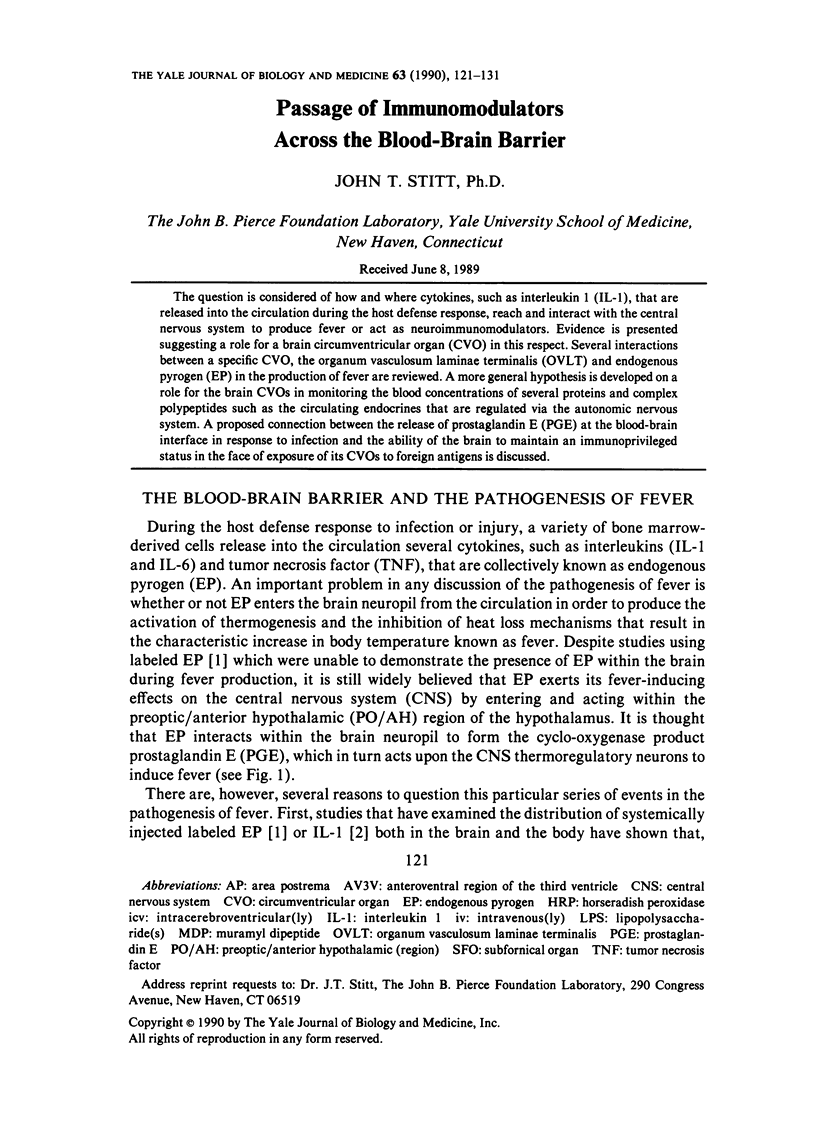
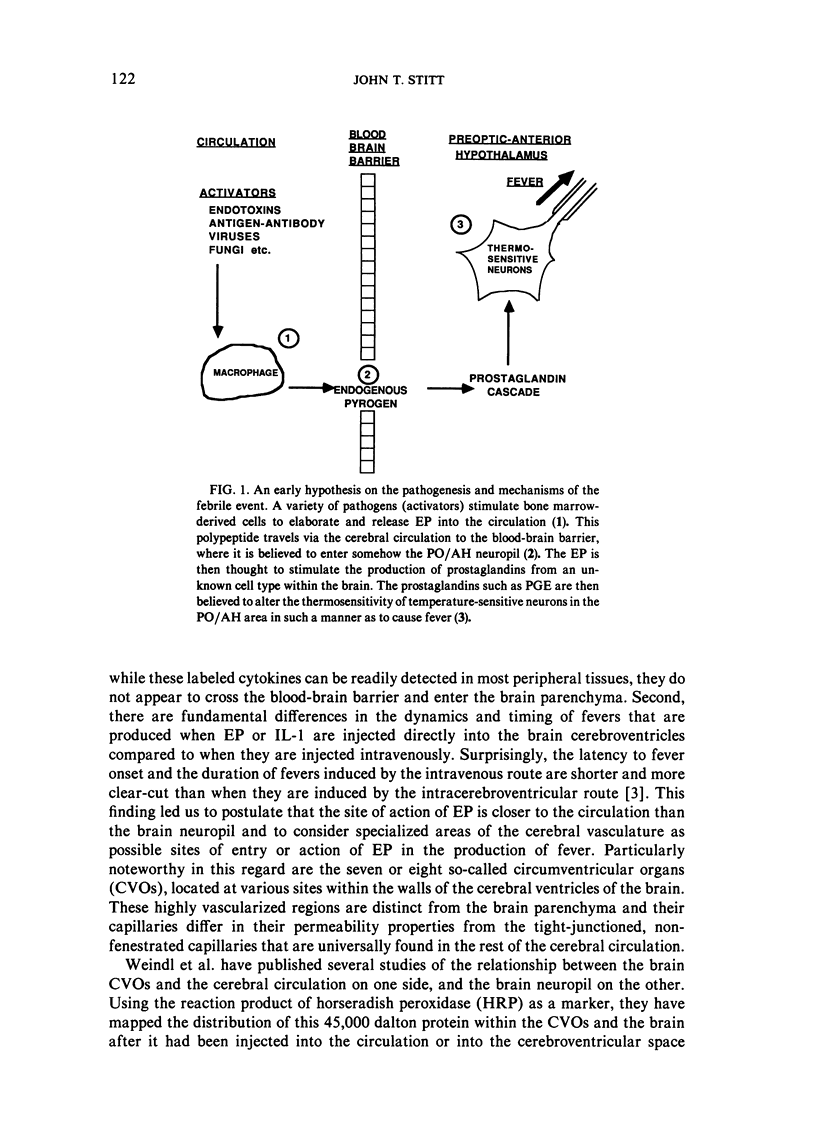
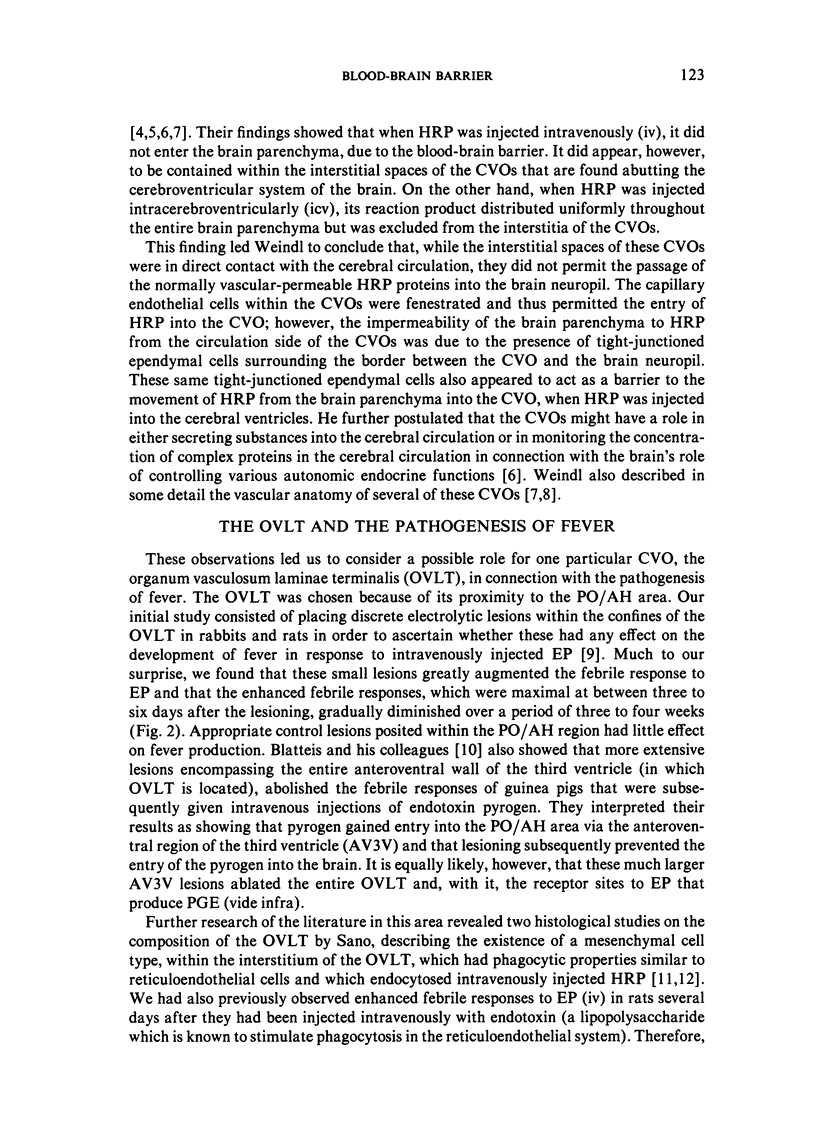
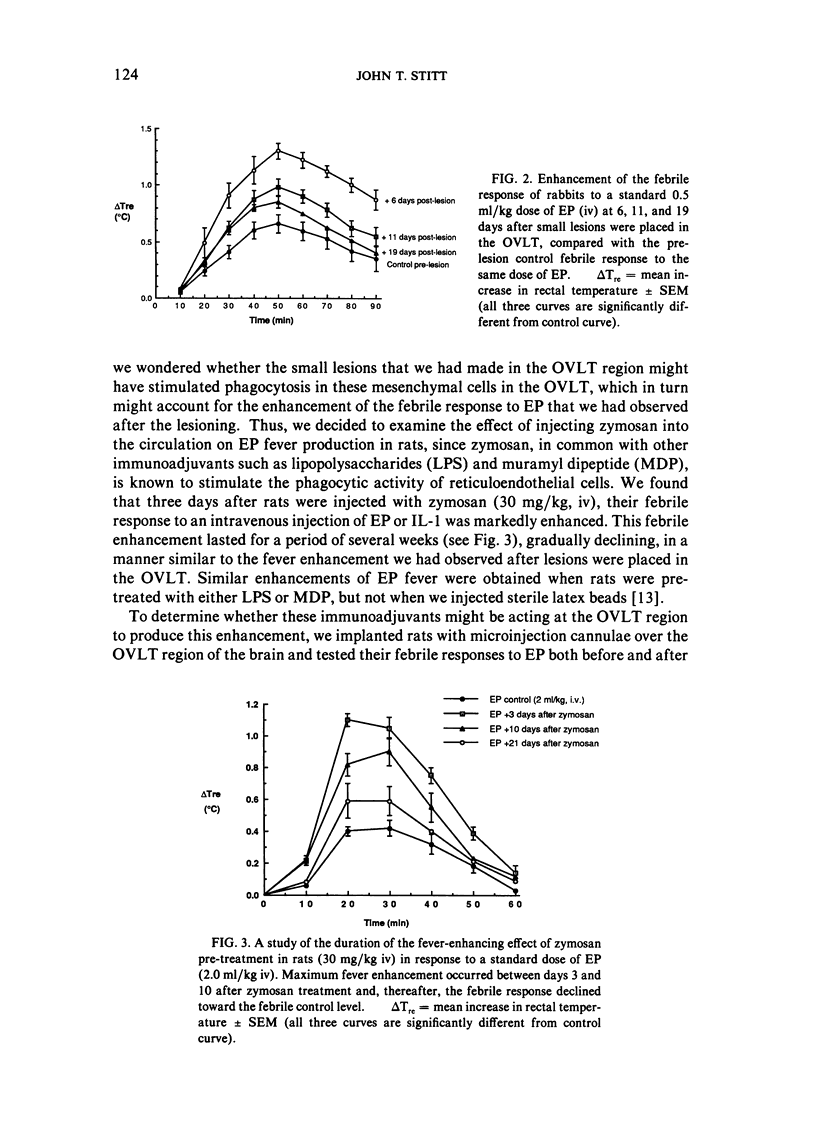
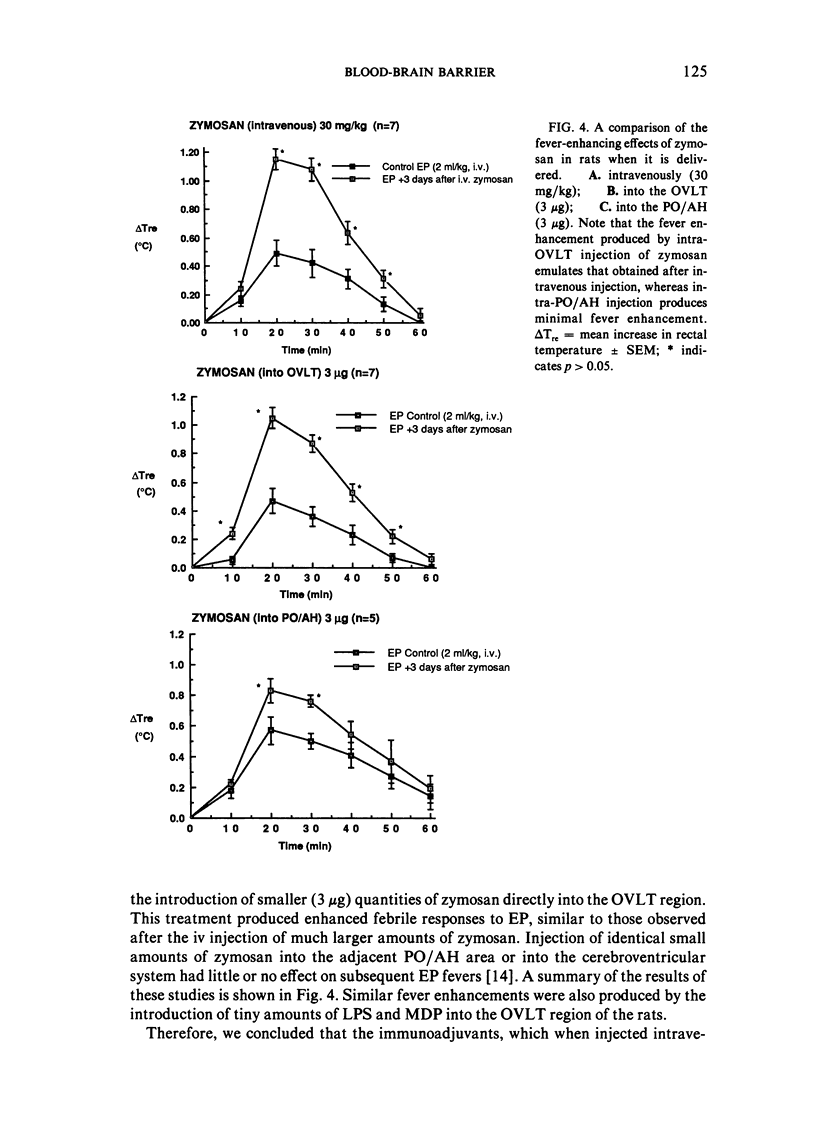
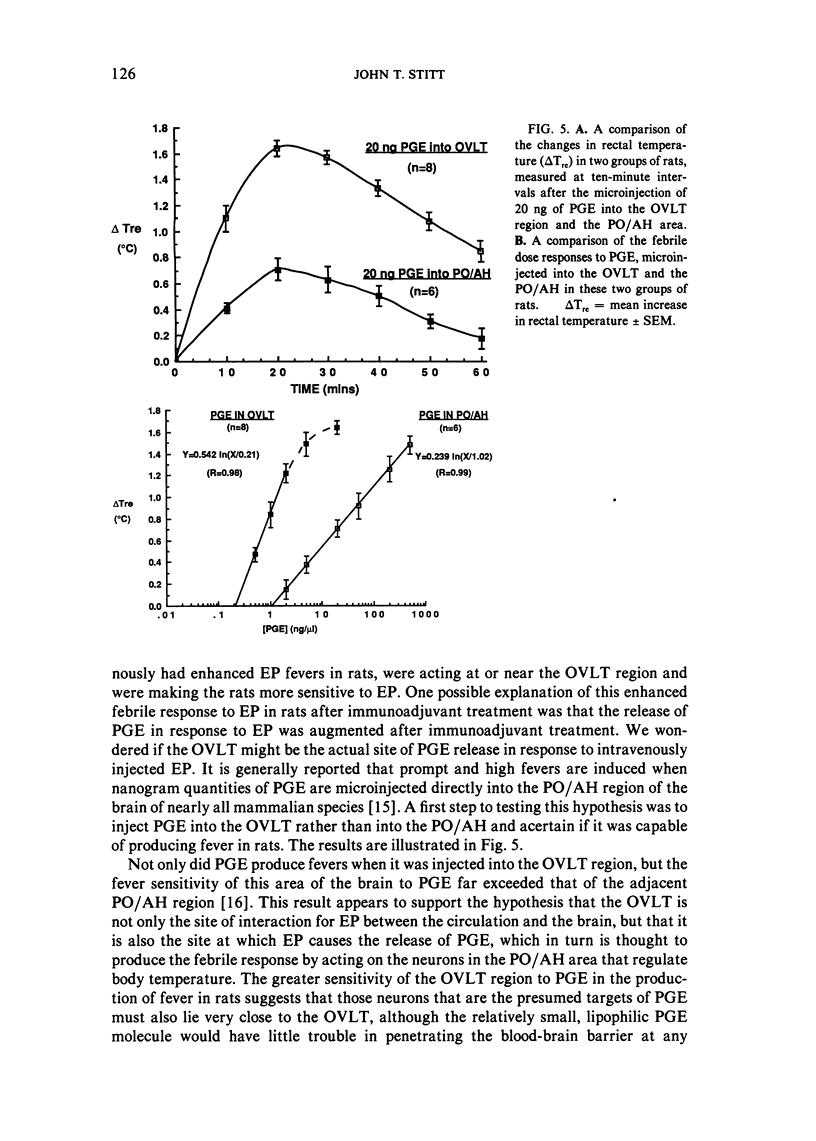
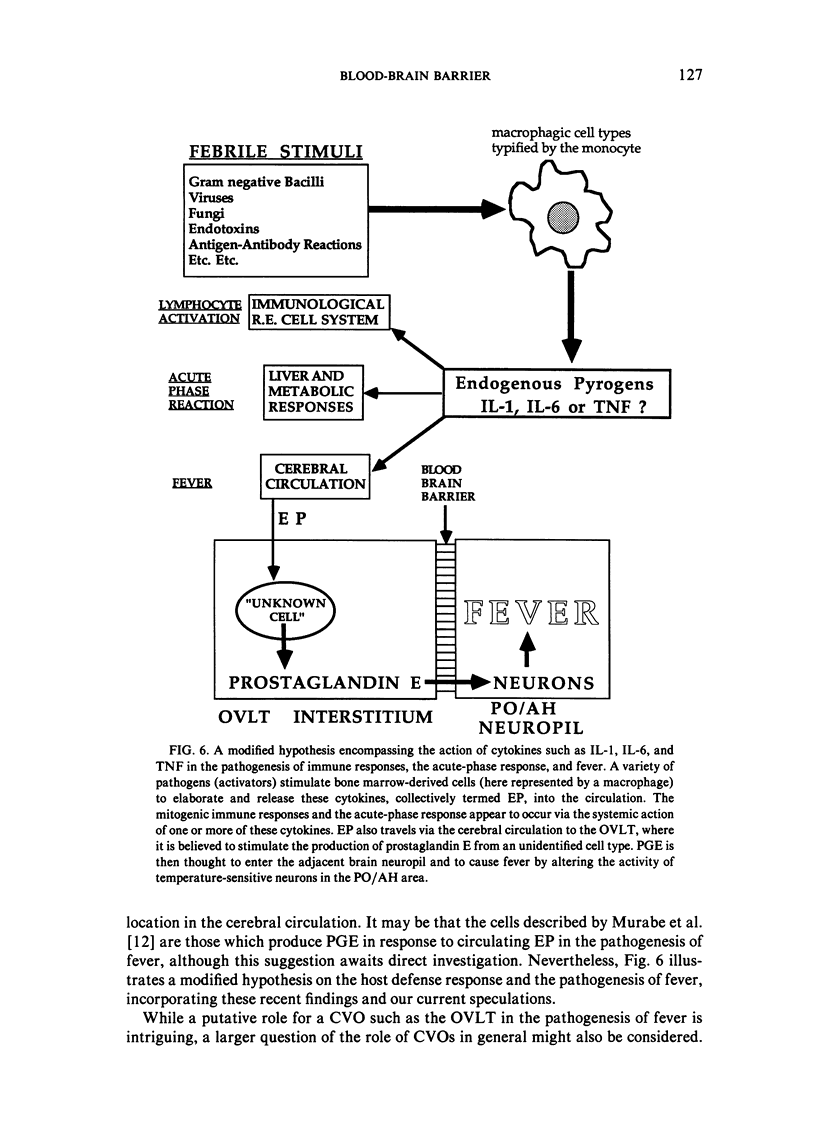

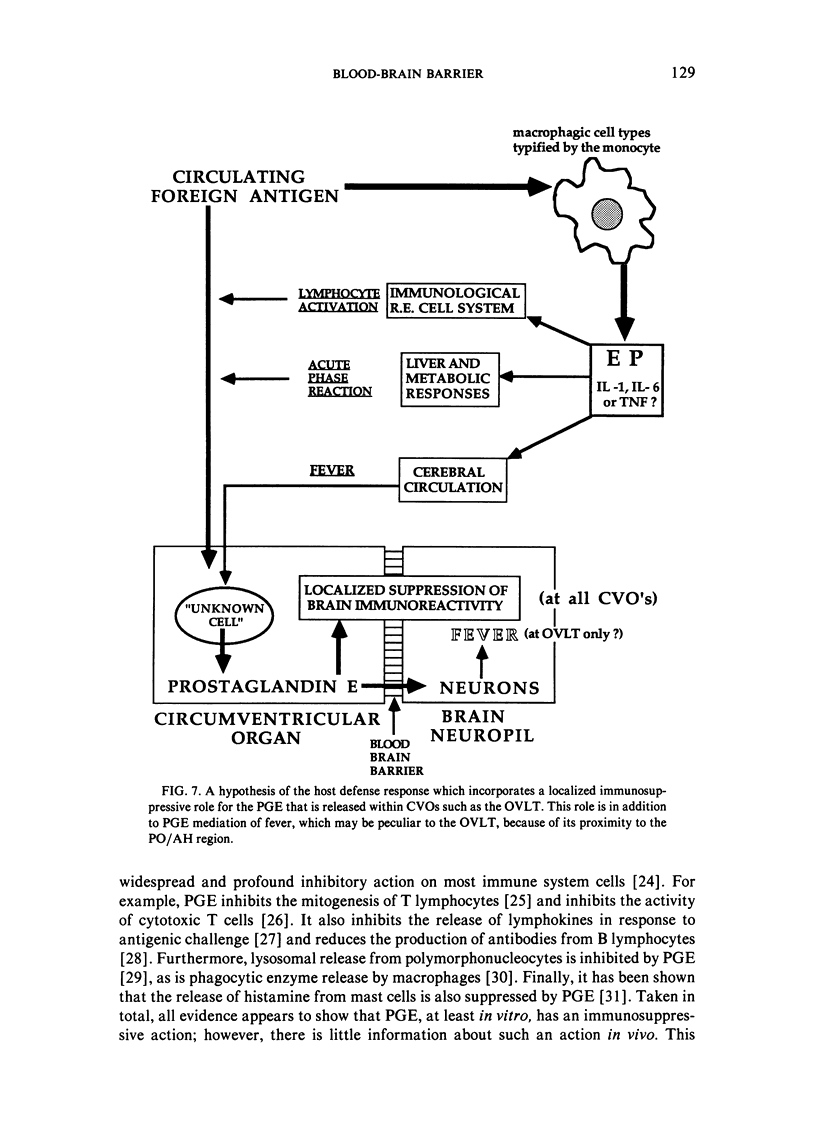
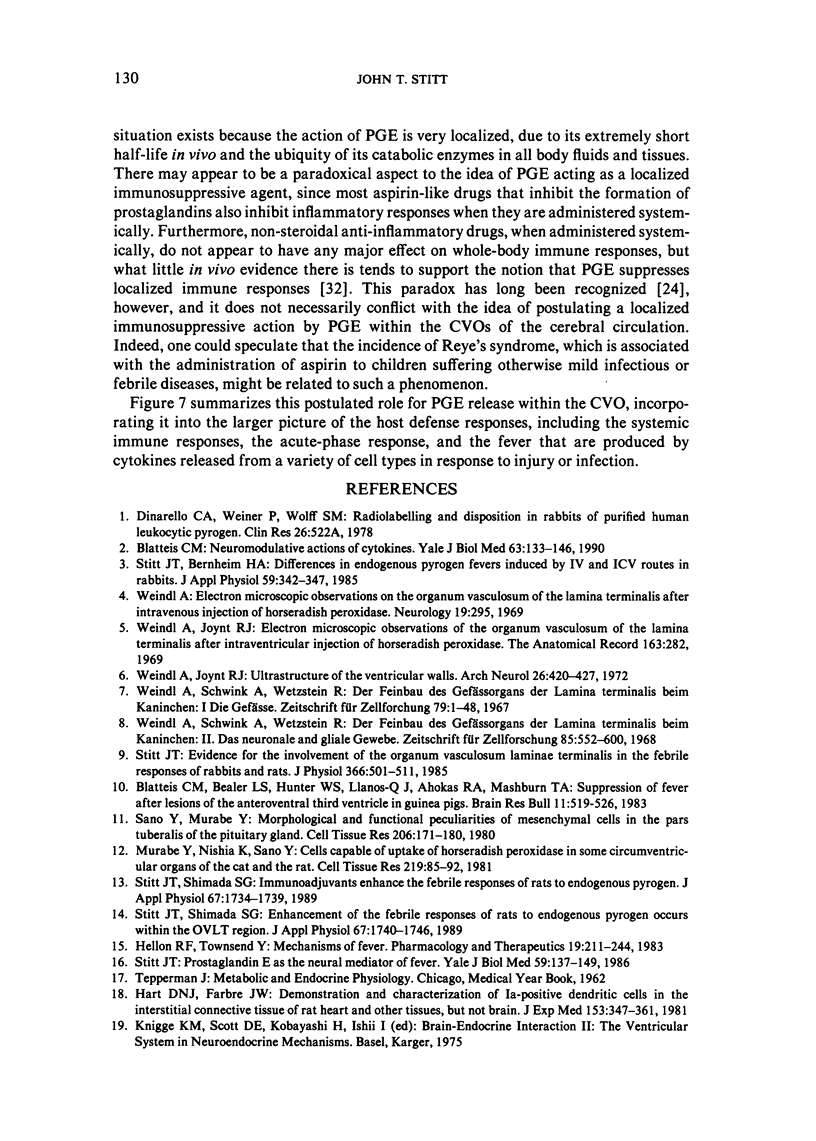
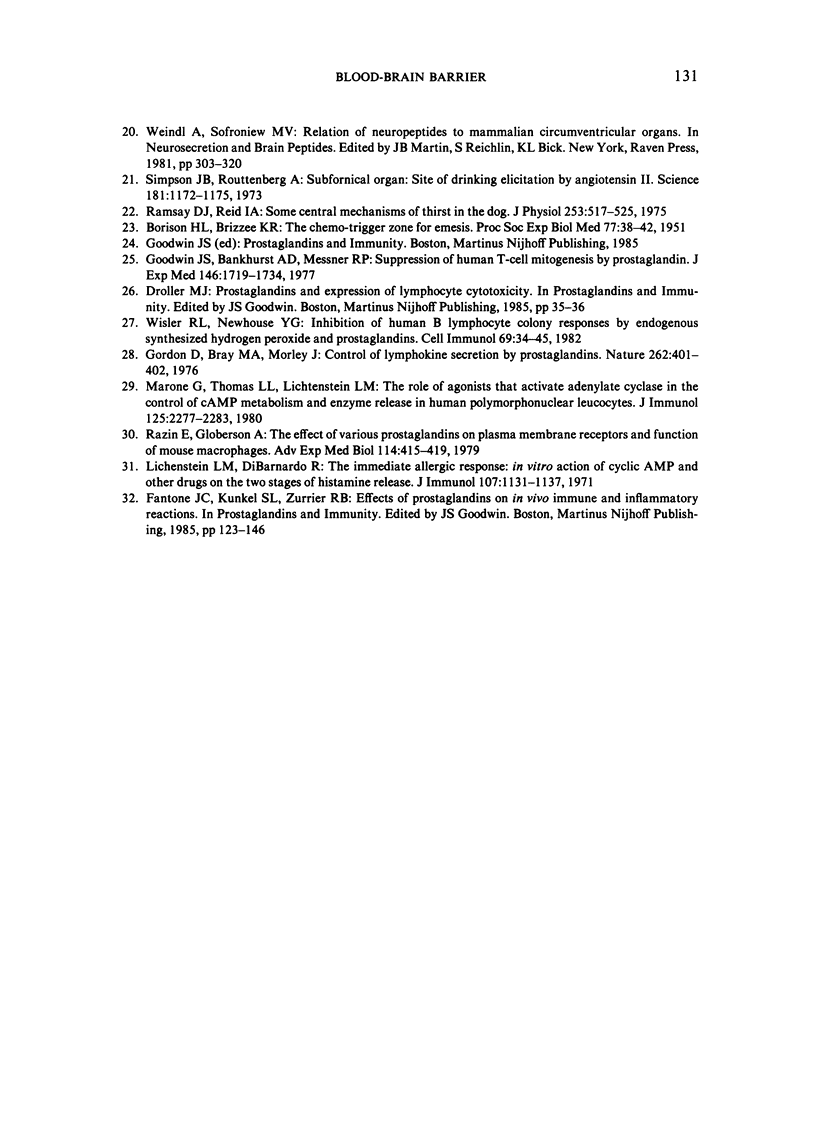
Selected References
These references are in PubMed. This may not be the complete list of references from this article.
- BORISON H. L., BRIZZEE K. R. Morphology of emetic chemoreceptor trigger zone in cat medulla oblongata. Proc Soc Exp Biol Med. 1951 May;77(1):38–42. doi: 10.3181/00379727-77-18670. [DOI] [PubMed] [Google Scholar]
- Blatteis C. M., Bealer S. L., Hunter W. S., Llanos-Q J., Ahokas R. A., Mashburn T. A., Jr Suppression of fever after lesions of the anteroventral third ventricle in guinea pigs. Brain Res Bull. 1983 Nov;11(5):519–526. doi: 10.1016/0361-9230(83)90124-7. [DOI] [PubMed] [Google Scholar]
- Blatteis C. M. Neuromodulative actions of cytokines. Yale J Biol Med. 1990 Mar-Apr;63(2):133–146. [PMC free article] [PubMed] [Google Scholar]
- Goodwin J. S., Bankhurst A. D., Messner R. P. Suppression of human T-cell mitogenesis by prostaglandin. Existence of a prostaglandin-producing suppressor cell. J Exp Med. 1977 Dec 1;146(6):1719–1734. doi: 10.1084/jem.146.6.1719. [DOI] [PMC free article] [PubMed] [Google Scholar]
- Gordon D., Bray M. A., Morley J. Control of lymphokine secretion by prostaglandins. Nature. 1976 Jul 29;262(5567):401–402. doi: 10.1038/262401a0. [DOI] [PubMed] [Google Scholar]
- Hart D. N., Fabre J. W. Demonstration and characterization of Ia-positive dendritic cells in the interstitial connective tissues of rat heart and other tissues, but not brain. J Exp Med. 1981 Aug 1;154(2):347–361. doi: 10.1084/jem.154.2.347. [DOI] [PMC free article] [PubMed] [Google Scholar]
- Hellon R., Townsend Y. Mechanisms of fever. Pharmacol Ther. 1982;19(2):211–244. doi: 10.1016/0163-7258(82)90063-8. [DOI] [PubMed] [Google Scholar]
- Lichtenstein L. M., DeBernardo R. The immediate allergic response: in vitro action of cyclic AMP-active and other drugs on the two stages of histamine release. J Immunol. 1971 Oct;107(4):1131–1136. [PubMed] [Google Scholar]
- Marone G., Thomas L. L., Lichtenstein L. M. The role of agonists that activate adenylate cyclase in the control of cAMP metabolism and enzyme release by human polymorphonuclear leukocytes. J Immunol. 1980 Nov;125(5):2277–2283. [PubMed] [Google Scholar]
- Murabe Y., Nishida K., Sano Y. Cells capable of uptake of horseradish peroxidase in some circumventricular organs of the cat and rat. Cell Tissue Res. 1981;219(1):85–92. doi: 10.1007/BF00210020. [DOI] [PubMed] [Google Scholar]
- Ramsay D. J., Reid I. A. Some central mechanisms of thirst in the dog. J Physiol. 1975 Dec;253(2):517–525. doi: 10.1113/jphysiol.1975.sp011204. [DOI] [PMC free article] [PubMed] [Google Scholar]
- Razin E., Globerson A. The effect of various prostaglandins on plasma membrane receptors and function of mouse macrophages. Adv Exp Med Biol. 1979;114:415–419. doi: 10.1007/978-1-4615-9101-6_68. [DOI] [PubMed] [Google Scholar]
- Sano Y., Murabe Y. Morphological and functional peculiarities of mesenchymal cells in the pars tuberalis of the pituitary gland. Cell Tissue Res. 1980;206(2):171–180. doi: 10.1007/BF00232761. [DOI] [PubMed] [Google Scholar]
- Simpson J. B., Routtenberg A. Subfornical organ: site of drinking elicitation by angiotensin II. Science. 1973 Sep 21;181(4105):1172–1175. doi: 10.1126/science.181.4105.1172. [DOI] [PubMed] [Google Scholar]
- Stitt J. T., Bernheim H. A. Differences in endogenous pyrogen fevers induced by iv and icv routes in rabbits. J Appl Physiol (1985) 1985 Aug;59(2):342–347. doi: 10.1152/jappl.1985.59.2.342. [DOI] [PubMed] [Google Scholar]
- Stitt J. T. Evidence for the involvement of the organum vasculosum laminae terminalis in the febrile response of rabbits and rats. J Physiol. 1985 Nov;368:501–511. doi: 10.1113/jphysiol.1985.sp015872. [DOI] [PMC free article] [PubMed] [Google Scholar]
- Stitt J. T. Prostaglandin E as the neural mediator of the febrile response. Yale J Biol Med. 1986 Mar-Apr;59(2):137–149. [PMC free article] [PubMed] [Google Scholar]
- Stitt J. T., Shimada S. G. Enhancement of the febrile responses of rats to endogenous pyrogen occurs within the OVLT region. J Appl Physiol (1985) 1989 Nov;67(5):1740–1746. doi: 10.1152/jappl.1989.67.5.1740. [DOI] [PubMed] [Google Scholar]
- Stitt J. T., Shimada S. G. Immunoadjuvants enhance the febrile responses of rats to endogenous pyrogen. J Appl Physiol (1985) 1989 Nov;67(5):1734–1739. doi: 10.1152/jappl.1989.67.5.1734. [DOI] [PubMed] [Google Scholar]
- Weindl A., Joynt R. J. Ultrastructure of the ventricular walls. Three-dimensional study of regional specialization. Arch Neurol. 1972 May;26(5):420–427. doi: 10.1001/archneur.1972.00490110054005. [DOI] [PubMed] [Google Scholar]
- Weindl A., Schwink A., Wetzstein R. Der Feinbau des GefäBorgans der Lamina terminalis beim Kaninchen. Z Zellforsch Mikrosk Anat. 1967;79(1):1–48. [PubMed] [Google Scholar]
- Weindl A., Schwink A., Wetzstein R. Der Feinbau des Gefässorgans der Lamina terminalis beim Kaninchen. II. Das neuronale und gliale Gewebe. Z Zellforsch Mikrosk Anat. 1968;85(4):552–600. [PubMed] [Google Scholar]
- Whisler R. L., Newhouse Y. G. Inhibition of human B lymphocyte colony responses by endogenous synthesized hydrogen peroxide and prostaglandins. Cell Immunol. 1982 May 1;69(1):34–45. doi: 10.1016/0008-8749(82)90048-x. [DOI] [PubMed] [Google Scholar]


